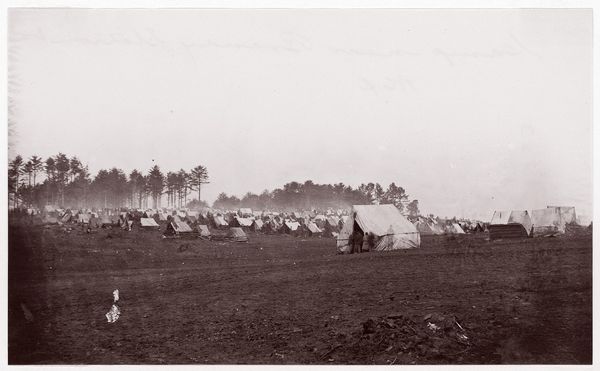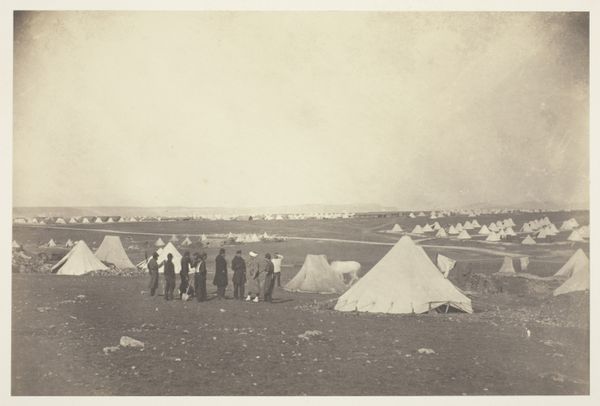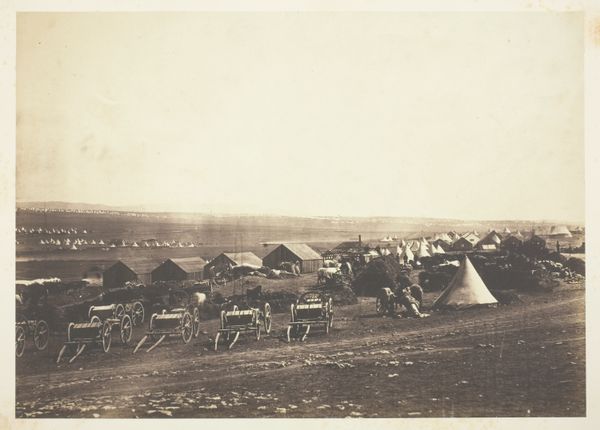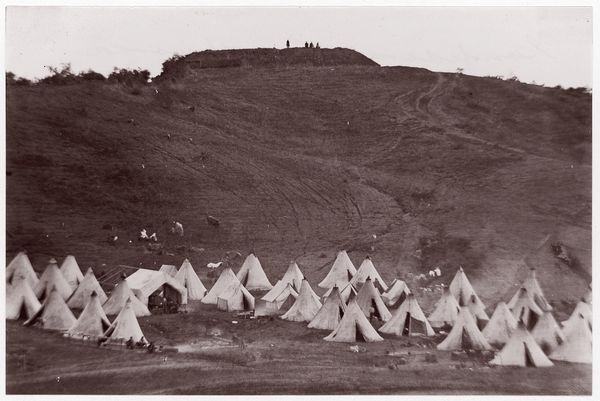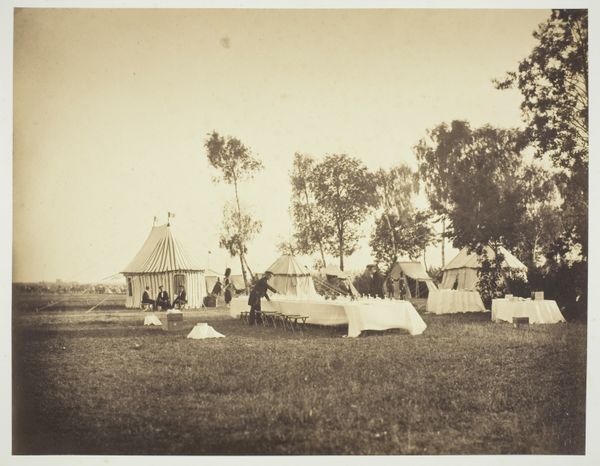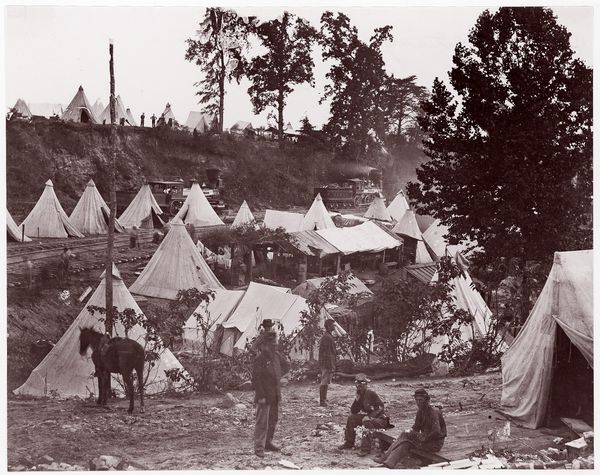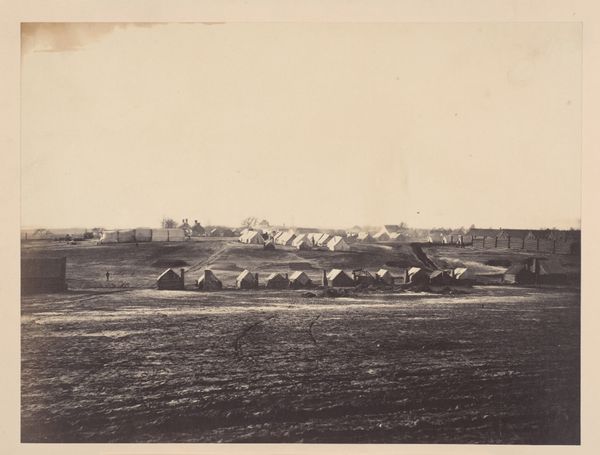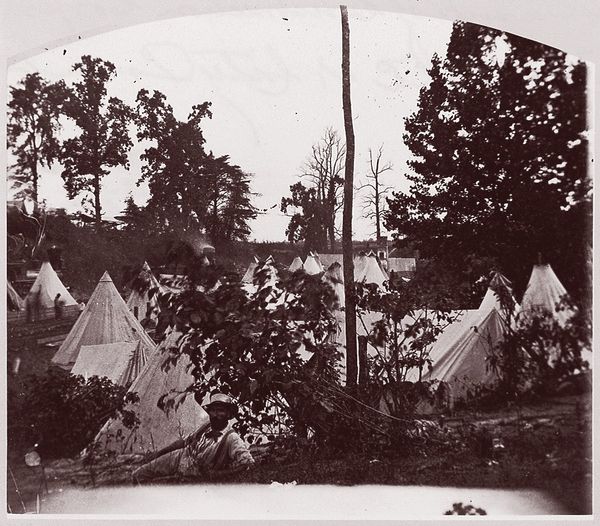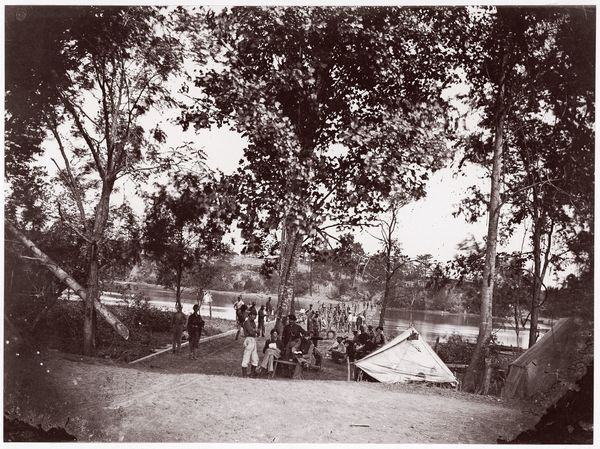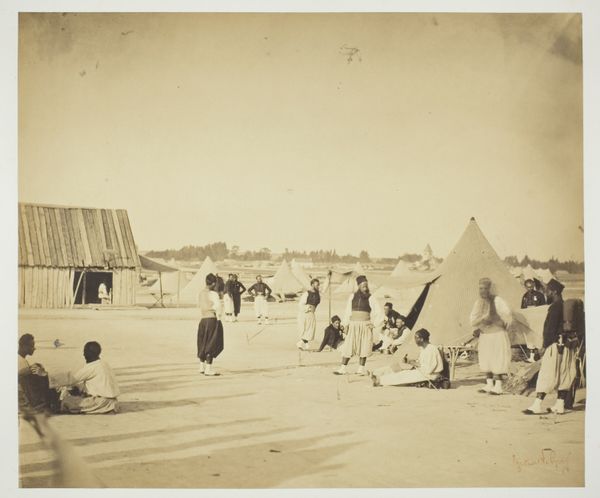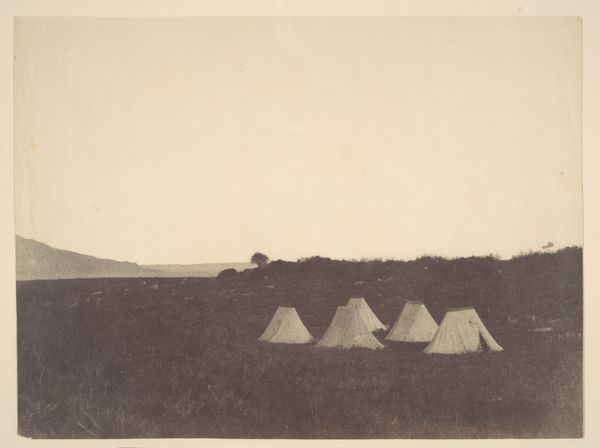
#
competition photography
#
black and white photography
#
photo restoration
#
war
#
outdoor photograph
#
outdoor photo
#
outdoor photography
#
outdoor loving
#
couple photography
#
horse
#
monochrome photography
#
outdoor activity
Copyright: Public Domain
Editor: So, this is "Belle Plain, Virginia," a photograph taken in 1864. Looking at the sheer number of tents… it gives off a feeling of impermanence. What symbols or stories jump out at you from this image? Curator: The most prominent symbol, of course, is the tent itself. It is a transient home, a marker of disrupted domesticity. Consider what ‘home’ meant during the Civil War era: family, stability, and continuity. The tent, en masse as we see here, represents the antithesis of these values, suggesting temporary refuge amidst conflict. Ask yourself, what emotional associations did a tent evoke for the soldiers? Editor: So, it’s more than just shelter? A kind of stand-in? Curator: Precisely. It’s a visual shorthand for the psychological displacement experienced by these men. Notice how the tents are uniformly white? Purity is questioned alongside loss of individuality and integration into a singular collective. These tents become an iconographic landscape of war itself, stark and repetitive. Editor: The wagons with horses in front do contrast that uniformity… almost as symbols of resilience. Curator: Absolutely! The wagons, with their implied movement and provisions, suggest endurance and logistical support but what does that support enable? War, fundamentally, is this visual dance between disruption and sustained violence. Gardner captured a potent symbol of a nation divided. Editor: I see it now; a temporary pause during incredible conflict. It’s bleak, yet incredibly human. Curator: Yes, images such as these continue to act as both a mirror and a window, allowing us to examine past and present conflicts through symbolic framing.
Comments
No comments
Be the first to comment and join the conversation on the ultimate creative platform.
